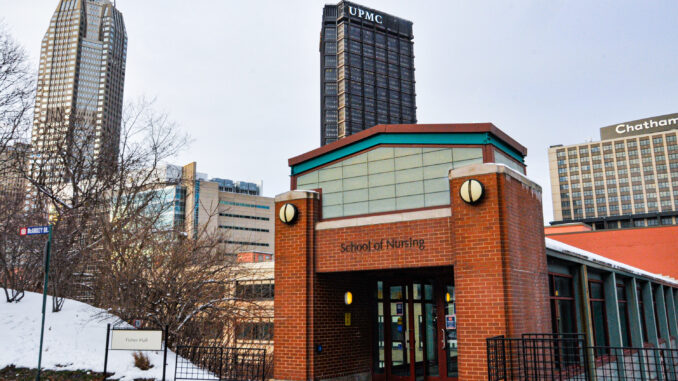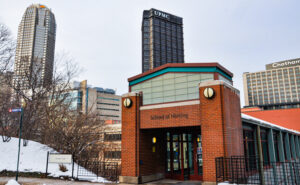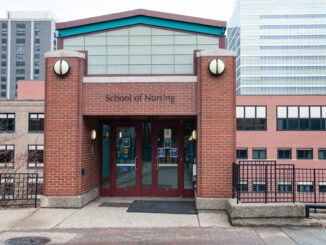

Emily Ambery | Staff Writer
02/04/2021
Fisher Hall, soon to be home to a consolidated School of Nursing, was purchased by the university in 1995 from the Fisher Scientific Company.
For several years, the building has housed a variety of offices and programs.
The layout of Fisher is known for being confusing, according to Tom White, the university archivist.
“Fisher Hall is actually five smaller buildings with a common facade,” White explained.
The history of Fisher is much more recent than some other buildings on campus.
College Hall, which is home to the McAnulty College of Liberal Arts, is named after Duquesne’s ninth president, Fr. Henry Joseph McAnulty, who was president from 1959 to 1980. McAnulty was monumental in fundraising for the university and carrying out his predecessor’s Master Plan. It is the oldest school at the university.
“Three of our academic buildings used to be parking garages,” White said. “The Mary Pappert School of Music, The McAnulty College of Liberal Arts and Gumberg Library.”
Archbishop J.F. Regis Canevin was Bishop of Pittsburgh during the time when Duquesne was growing. Canevin helped secure funding for expansion and supported Duquesne and the Pittsburgh community immeasurably. The completed Canevin Hall was dedicated on Oct. 28, 1923.
Rockwell Hall is named after Colonel Willard F. Rockwell. An alumnus, former chairman of the President’s Advisory Board and fundraiser for Duquesne, he gave $226,000 to the Duquesne building fund. In return for his generosity, Rockwell Hall was dedicated on Nov. 16, 1958.
In 1964, The Richard King Mellon Foundation gifted $2 million dollars for the science hall. Father McAnulty, president at the time, asked if it could be named “Richard King Mellon Hall,” and it took six months for General Richard King Mellon to consent. The Mellon Hall of Science was completed and dedicated in 1968.
“Mellon Hall was designed by the famous architect Ludwig Mies van der Rohe,” White said. “The frame actually collapsed during construction because it wasn’t fully tightened.”
John G. Rangos Sr. was a member of the Duquesne’s board of directors, and was president and CEO of Chambers Development Co. when he gave the university $2 million to convert and equip a health science building. The John G. Rangos Sr. School of Health Sciences was completed and dedicated on Oct. 18, 1991.
“The bricks for Old Main were made by Spiritan priests and brothers in a brickyard that once occupied the site of Rangos,” White said.
The Bayer Corporation donated $2 million to the university for a school of Natural and Environmental Sciences, to be matched by Duquesne in return for the school to be named the Bayer Learning Center. The Bayer School of Natural and Environmental Sciences was dedicated in the spring of 1996.
Venerable Francis Libermann, C.S.Sp. was a missionary and played a key role in the formation and expansion of the Spiritan Congregation. Fr. Libermann’s spirituality and influence reminds the Duquesne community of its Spiritan identity. Libermann Hall, which houses Duquesne’s state-of-the-art biomedical engineering and nursing labs, was dedicated on his feast day, Feb. 2, in 2011.




